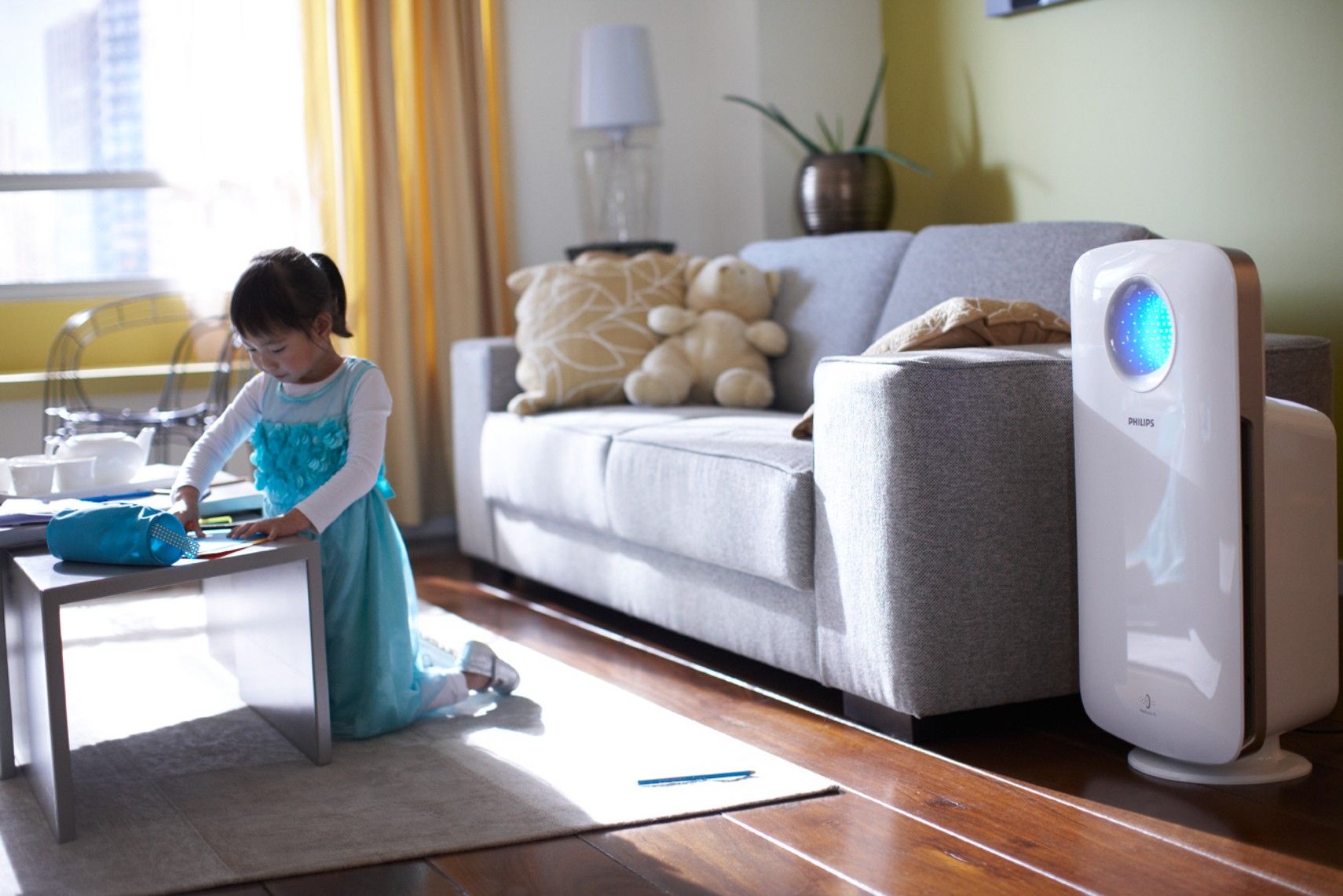Air pollution has become one of the most serious issues of the 21st century. With rapid industrialization and urbanization, one thing that has taken the most brutal hit is the nature: the environment. With modernization comes luxury, with luxury comes comfort and what could be a better example of comfort than having a personal car? After all, who likes to travel in the public transport by choice, isn’t it?
What these alarmingly high figures of cars running on the roads illustrate? It illustrates the quality of air that is going into our lungs with every breath. According to an IIT-Kanpur report, toxic exhaust fumes from vehicles constitute 25% of the city’s air pollution. The latest government data shows 6,502 people died of respiratory diseases in 2015, making it one of the leading causes of death.
This is when an air purifier comes to the rescue..
Now, if you are a frequent visitor to the posts on this blog, you might be probably aware that we take each topic from the grass root level and we will do the same with this post as well. We will begin with the basics first, understand how an Air Purifier works and the various types of filters that are deployed in air purifiers, then we’ll proceed to understand what Clean Air Delivery Rate (CADR) value of the air purifier should one go for depending upon the room size and the coverage area. After that, we will move on to discuss how some brands cut costs and manufacture below par products that are very inefficient in keeping the air clean and purified and hence pose a threat of contracting respiratory disorders and then we will proceed onto deciding which air purifier would be the best for you, according to your needs.
You might be glad to know that my father works at a company that manufactures home appliances like refrigerators, air purifiers, kitchen chimneys, washing machines etc. So at home, we frequently have a conversation about commercial appliances, what goes into making them, how brands try to do cost cutting etc.
Today, I'll try my best to pass on the knowledge that I have acquired from my father over the years, to you so as to help you make a good buying decision.
So without further a do, let’s begin…
The Basics
There are multiple allergens in the atmosphere including smoke, dust, pollen grains, bacteria, viruses etc which can not be seen with the naked eye but are extremely damaging to the lungs and the immune system. The air inside a typical home is generally dirtier than the air outside, because a house can be a source of air contaminants. Moisture can lead to the development of molds and spores then air conditioners circulate the dust particles and bacteria throughout the house. Pollen grains and other outdoor allergens can blow in through open doors and windows and become caught in carpet or bed sheets.
Air purifiers filter allergens and pollutants which may or may not be visible to the human eye. To remove these allergens, air purifiers typically use filters.
Some of the most commonly used filters in an Air Purifier are:-
- HEPA
- Activated Carbon
A HEPA or the High Efficiency Particulate Air is a type of mechanical air filter; it works by forcing air through a fine mesh. The fibers of the mesh are typically composed of fiberglass and are remarkably effective in trapping contaminants above 0.01 microns. This makes air purifiers a great proposition to control the indoor spread of SARS-CoV-2 virus responsible for the Covid-19 pandemic as the size of the virus is 0.125 microns, that falls squarely within the particle size range that HEPA filters eliminate with extraordinary efficiency. Other contaminants that a HEPA filter effectively traps are bacteria, fungi, smoke, dust, pollen grains, etc.
To put it simply, HEPA filters trap air contaminants in a complex web of fibers. Depending on the size of the particle, filtration of contaminants happens in the following ways:-
- Inertial Impaction and Sieving
- Diffusion
- Interception
Medium sized particles, as they move through the filter, are grabbed by the fibers via interception.
Smaller particles are dissipated as they travel through the filter and eventually collide with a fiber and are trapped.
(Image of the working of the HEPA filtration mechanism)
Activated Carbon Filters
Activated carbons are small pieces of carbon, typically in granular or powdered block form, that have been treated to be extremely porous. Vast surface area of the activated carbon enables these filters to adsorb exponentially more contaminants and allergens than traditional carbon. Contaminated air enters the filtration system, passes through the active carbon, undergoes adsorption, and leaves the filter after getting purified.
Adsorption is a process where organic compounds in the air react chemically with the activated carbon, which causes them to stick to the filter. The more porous the activated carbon is, the more contaminants it will capture. The activated carbon filters work in collaboration with the HEPA filters to get rid of unpleasant odors and the other harmful allergens discussed above.
Apart from the filters, some air purifiers make use of other technologies like negative ionization, ozone emission and UV filtration. However, these technologies work well for countries where the air quality is much better unlike India where you find very dense and high particulate pollutants i.e. the PM 2.5 which is extremely harmful for the living beings.

Now, having learnt about the working of the air purifier and the various filters that are used in it, let’s proceed to learn what Clean Air Delivery Rate (CADR) value of the air purifier should you go for depending upon the area of the space that you wish to purify.
- For installing the air purifier in a bedroom having area up to 350 square feet, go with an air purifier that provides a coverage area of at least 370 to 400 square feet with the CADR value between 150 to 250 metre cube per hour.
- For installing the air purifier in the living room having area in the range of 350 to 700 square feet, purchase an air purifier that provides a coverage area in the range of 400 to 750 square feet with the CADR value of 250 to 350 metre cube per hour.
- For installing the air purifier for purifying the entire house i.e. for areas beyond 700 square feet, go with an air purifier that provides a coverage area in the range of 800 to 1200 square feet with the CADR value of 400 metre cube per hour and beyond.
Having said that, let’s proceed to learn how some brands (names not taken) cut manufacturing costs to maximize their profits and in return provide an inefficient product to the consumer which can cause irreversible damage to the consumer’s health.
- Using a below par HEPA filter. For its paramount importance, HEPA filter accounts for almost 30% of the entire cost of the air purifier. Hence, in order to reduce production costs and to maximize profits, some manufacturers resort deploying a poorly fabricated and inefficient HEPA filter in the air purifiers they manufacture, that is not potent enough in trapping the numerous allergens present in the air and hence the contaminants stay unaffected in the air one breathes that may lead to development of respiratory diseases including bronchitis, lung cancer and asthma.
- Using a low grade fan. The effectiveness of an air purifier depends upon the speed settings of the fan and the wattage of the motor. Now, what some brands do is, they show a higher capacity of the air circulating fan on paper, so as to fool the innocent buyers. However, in reality the fan speed of such air purifiers is extremely low and thus the clean and purified air is not able to circulate to a large area which in turn leaves the air in the far off spaces unclean and full of harmful disease causing allergens.

Now, having learnt how some air purifier manufacturers cut costs, let’s proceed to zero down on some of the best built air purifiers available in the market that are not only the best in their air purifying prowess but are also energy efficient in their working and offer the most value for money.
Note: In our constant endeavour to assist you in making an informed buying decision, we test the new launches of the products on multiple parameters, and if they stand tall in our analysis we periodically add them to the below mentioned list of our recommended products. So, if you plan to make the purchase at a later time, you may visit the links once again at the very time of buying to ensure that the purchase turns out to be a very fruitful one.
For coverage area up to 400 square feet
Best Choice 1, My Preferred Choice, Best Choice 2, Best Choice 3, Best Choice 4, Best Choice 5 and Best Choice 6
For coverage area in the range of 400 to 750 square feet
Best Choice 1, Best Choice 2, My Preferred Choice, Best Choice 3, Best Choice 4, Best Choice 5, Best Choice 6 and Best Choice 7
For coverage area beyond 800 square feet
Best Choice 1, Best Choice 2, My Preferred Choice, Best Choice 3, Best Choice 4, Best Choice 5 and Best Choice 6






No comments:
Post a Comment